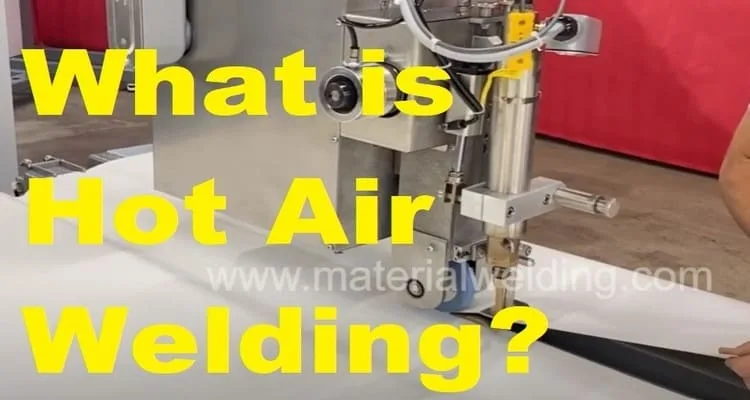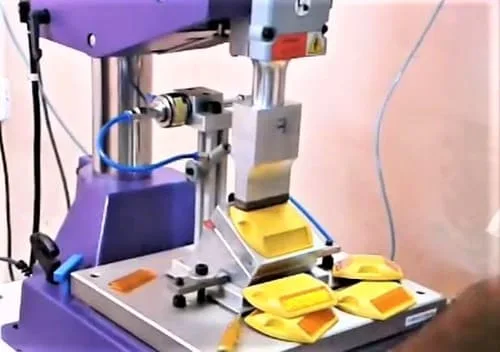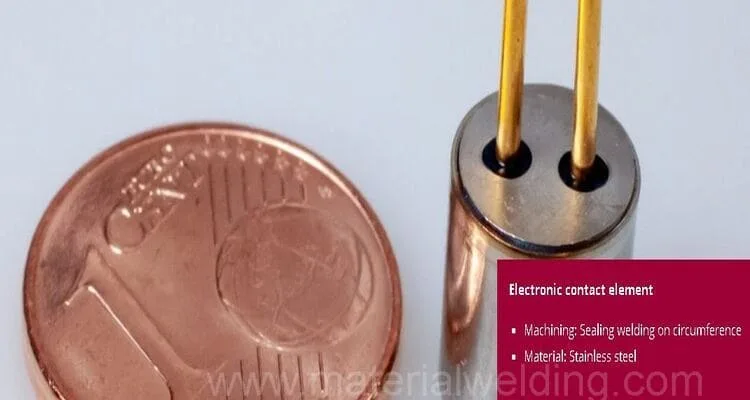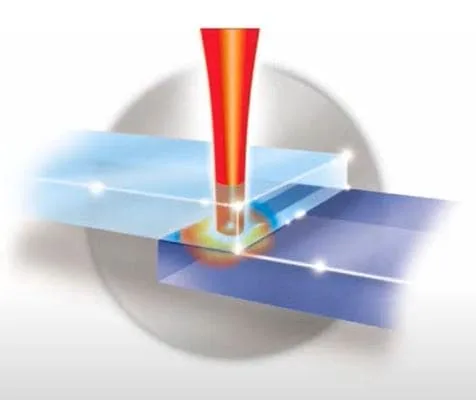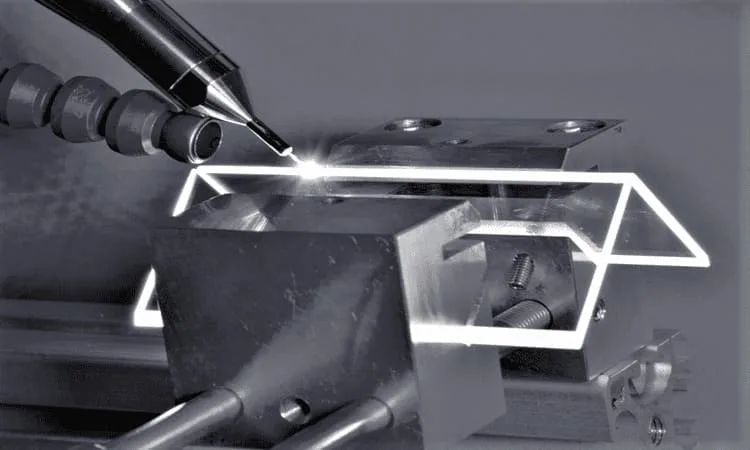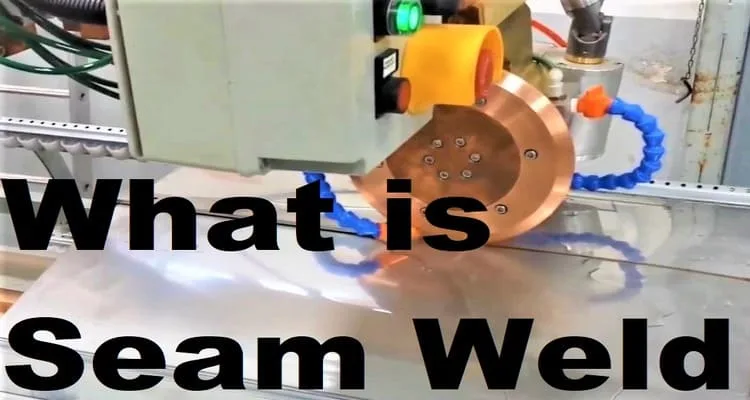RF Welding, otherwise known as dielectric welding or high-frequency welding, is a method of joining plastics and other thermoplastic materials together using radio frequency energy.
This form of welding has been around since the 1930s and has become increasingly popular in recent decades due to its ability to quickly and effectively bond components with precision.
RF welding has been used to manufacture items ranging from medical devices and consumer products to automotive parts and military components.
In this article, we will explore what RF welding is, how it works, and the benefits of using it.
What is RF Welding?
RF welding, also known as radio-frequency welding or high-frequency welding, is a manufacturing process used to join two or more pieces of material together using electromagnetic energy.
The process is commonly used to weld thermoplastic materials, such as PVC, polyurethane, and nylon, among others.
In RF welding, two pieces of material are placed between two electrodes, and a high-frequency electromagnetic field is created using a high-frequency generator.
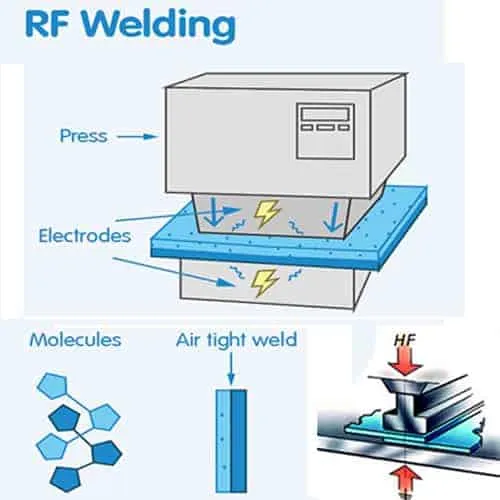
The electromagnetic field heats the molecules in the material, causing them to soften and fuse together under a clamping device until the weld solidifies.
How does RF Welding work?
RF welding, also known as radio frequency welding or high frequency welding, works by creating an electromagnetic field that causes the molecules in thermoplastic materials to heat up and fuse together.
The RF Welding process involves several steps:
- Preparation: The two pieces of material to be welded are placed between two electrodes. These electrodes are designed to apply pressure and high frequency to the material, ensuring a strong bond.
- High-frequency generator: An RF welding machine contains a high-frequency generator that produces an alternating current at a specific frequency. This frequency can range from 27.12 MHz to 40.68 MHz, depending on the type of material being welded.
- Dielectric heating: When the alternating current is applied to the electrodes, it creates an electromagnetic field between them. This field causes the molecules in the material to vibrate rapidly, generating heat. This process is known as dielectric heating.
- Fusion: As the material heats up, it softens and melts. The pressure from the electrodes forces the melted material together, causing it to fuse and form a strong bond.
- Cooling: After the material has been fused, it is allowed to cool and solidify. This process helps to further strengthen the bond between the two pieces of material.
RF Welding Machine
An RF welding machine is a type of equipment used to weld thermoplastic materials using radio frequency (RF) energy.
The machine typically consists of several components, including an RF power generator, control unit, press, enclosure, electrodes, and sometimes a handling mechanism.
The RF power generator converts line power to high-frequency, high-voltage power required for welding, typically at a frequency of 27.12 MHz and voltages ranging from 1kVAC to 1.5kVAC.
The control unit manages the operation of the machine, processing desired welding inputs such as force, power, and heating time, and instructing the other components of the machine to meet these process parameters.
The press, powered either pneumatically or hydraulically, applies clamping force during welding, while the electrodes apply pressure to the parts being joined and transmit the electric field through them during welding. An RF enclosure is used to protect operators from injury caused by radiofrequency radiation.
RF welding machines can be automated, either semi-automatic or fully automatic, with the latter responsible for loading, transporting, and manipulating parts.
The power required for welding is dependent on the area of the weld, thickness, and material, and controllers can monitor outputs and adjust parameters to ensure satisfactory welding.
RF Welding Machine Setup
Setting up an RF welding machine involves several steps:
- Ensure that the machine is located in a suitable area with adequate ventilation, electrical supply, and space to work safely.
- Check that all the components of the machine are in good condition and functioning properly. This includes the RF power generator, control unit, press, enclosure, electrodes, and any handling mechanisms.
- Adjust the machine’s settings based on the specific welding job at hand. This includes adjusting the voltage, frequency, pressure, and time settings to ensure proper welding of the material being used.
- Position the materials to be welded between the electrodes, making sure they are properly aligned and secured in place.
- Turn on the power supply and activate the machine, following the manufacturer’s instructions. This will begin the welding process, with the electrodes applying pressure and transmitting the electric field through the materials to create a strong, durable bond.
- Monitor the welding process closely to ensure that it is proceeding smoothly and that the finished product meets the required specifications.
- Once the welding is complete, turn off the power supply and carefully remove the welded materials from the machine.
- Clean and maintain the machine regularly to ensure optimal performance and longevity. This includes cleaning the electrodes, checking for any signs of wear or damage, and replacing any worn or damaged components as needed.
Applications of RF Welding
RF welding is a versatile manufacturing process that can be used to join a wide variety of thermoplastic materials.
As a result, it has many applications across a range of industries. Here are some of the most common applications of RF welding:
- Inflatable Products: RF welding is often used to manufacture inflatable products, such as pool toys, air mattresses, and inflatable boats. The strong, leak-proof seals created by RF welding ensure that these products can hold air for long periods of time.
- Medical Devices: Many medical devices, such as blood bags, IV bags, and surgical drapes, are made using RF welding. The process creates strong, sterile seals that can withstand the rigors of medical use.
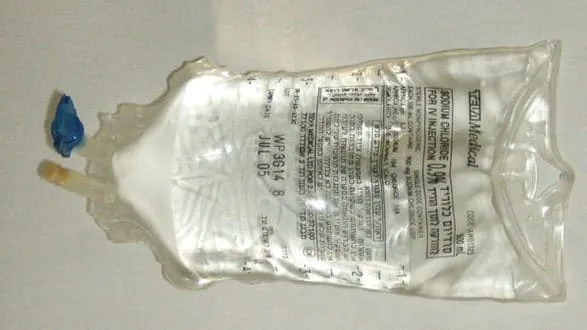
- Automotive Products: RF welding is used to manufacture many automotive products, such as door panels, seat covers, and dashboard covers. These products must be durable and able to withstand heat and friction, and RF welding creates strong, long-lasting bonds that meet these requirements.
- Protective Covers: RF welding is often used to create protective covers for electronic devices, such as smartphones, tablets, and laptops. These covers must be strong, flexible, and resistant to tearing, and RF welding can create seals that meet these requirements.
- Packaging: RF welding can be used to create packaging for food and other products. The process creates strong, airtight seals that help to preserve the freshness and quality of the packaged product.
